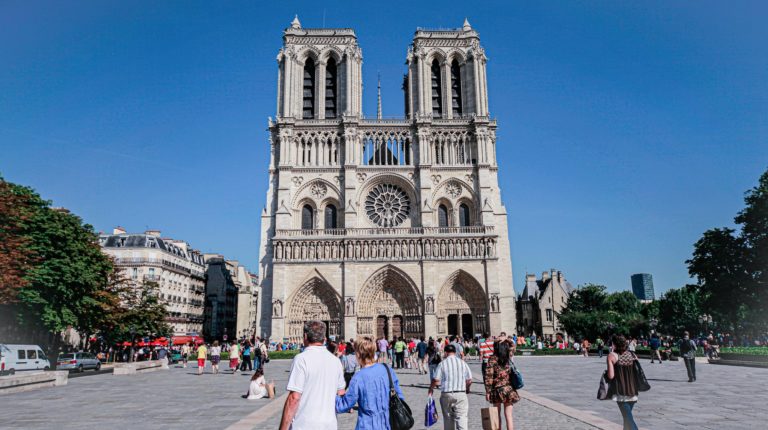The world famous Notre Dame in Paris has reopened its archeological crypt, a year after the devastating fire caused severe damage and led to the iconic landmark closing in April 2019.
While the crypt, which lies underneath the Notre Dame courtyard, was not damaged by the fire, it was impacted by lead dust fallout. Cleaning crews have been clearing the crypt of toxic debris since the fire was contained.

The crypt lies underneath the Notre dame courtyard. Credit: Unsplash
“It was terrible,” chief curator of the crypt, Sylvie Robin, told Smithsonian. “There was lead everywhere. Molds and micro-organisms spread, because we had to turn off the ventilation system. So today is an important moment, a very moving moment of renewal and hope for us.”
“In order to decontaminate the crypt we had to decontaminate the forefront of the cathedral as well and it took a long time because we had to repeat the operation several times. Every time we thought it had worked, and in fact no, it hadn’t. So, decontamination, then the pandemic, it took a long time. Actually, this exhibition was ready one year ago.” Anne de Moudenard, chief curator of the exhibition told AP.
The crypt reopened on September 9, featuring a brand new exhibit celebrating the cathedral’s history. The exhibit largely focuses on author Victor Hugo, who wrote The Hunchback of Notre Dame which helped make the cathedral famous worldwide. The exhibit also details the story of architect Eugene Viollet-Le-Duc, who designed the cathedral’s iconic gothic spire.
“We are paying homage to the cathedral after all that has confronted Paris, from the tragedy of the fire to the crisis of the pandemic,” said Sylvie Robin, chief curator of the crypt.
They have also imposed anti-COVID-19 measures, including physical distancing rules, mask-wearing, limiting the number of visitors and limiting touching interactive screens.
The crypt first opened to the public in 1980, and at 19,000 square feet is the largest crypt in Europe. It hosts ancient remains of thermal baths excavated from beneath Paris, as well as archeological digs of Ile de la Cite, the Parisian island where the cathedral now stands.
The exhibit will run until 2022.















